#krusevac
Photo

Slobodište Memorial Complex, Kruševac, Serbia. Created by Bogdan Bogdanović.
#Krusevac#Serbia#Bogdan Bogdanovic#Communism#Yugoslavia#Jugoslavija#World War II#Second World War#WWII#WW2
5 notes
·
View notes
Text
Love is the answer ❤️

#impossiblejewelry#love#ljubav#love quote#heart#photoset#resin jewelry#jewelry#gift idea#necklace#srbija#serbia#belgrade#beograd#krusevac#ogrlica#ona#split#design
13 notes
·
View notes
Text
Retired MIG 21, now a monument in Krusevac - Serbia.
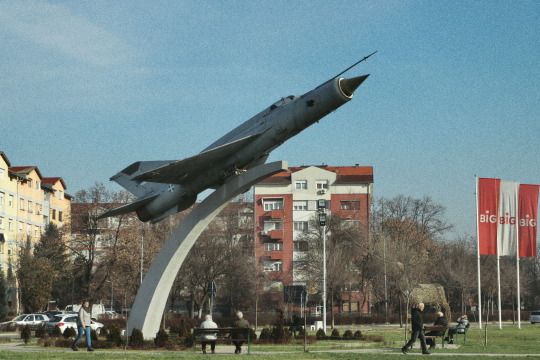
Retired Russian MiG jet fighter, now a monument in a serbian city
#russian aircraft#mig 21#cold war#socheritage#urban#canonphotography#cityscape#photographers on tumblr#balkan#easteurope#easterneurope#srbija#serbia#banalography#banal#MiG-21 Bis no. 17132#krusevac
3 notes
·
View notes
Photo

#leskovac #novisad #beograd #nis #kragujevac #vranje #kraljevo #novipazar #pirot #subotica #krusevac #sabac #smederevo #srbija #zemun #valjevo #cacak #zrenjanin #uzice #jagodina #novibeograd #sombor #pozarevac #pancevo #loznica #ni #beogradnocu #surdulica #vladickian #zlatibor https://www.instagram.com/p/CklgkvkMhpA/?igshid=NGJjMDIxMWI=
#leskovac#novisad#beograd#nis#kragujevac#vranje#kraljevo#novipazar#pirot#subotica#krusevac#sabac#smederevo#srbija#zemun#valjevo#cacak#zrenjanin#uzice#jagodina#novibeograd#sombor#pozarevac#pancevo#loznica#ni#beogradnocu#surdulica#vladickian#zlatibor
4 notes
·
View notes
Text
youtube
Lasersko sečenje prohroma - Inox - Kako iskoristiti maksimalno materijal sa kojim radite.
#lasercutting#laserskosečenje#krusevac#laserskosečenjekruševac#LaserCut#LaserCutArt#LaserCutDesigns#LaserCuttingCrafts#LaserCutProjects#LaserCuttingLife#Youtube
0 notes
Text
LAZAREVIC SISTERS III
Princess Jelena Lazarevic
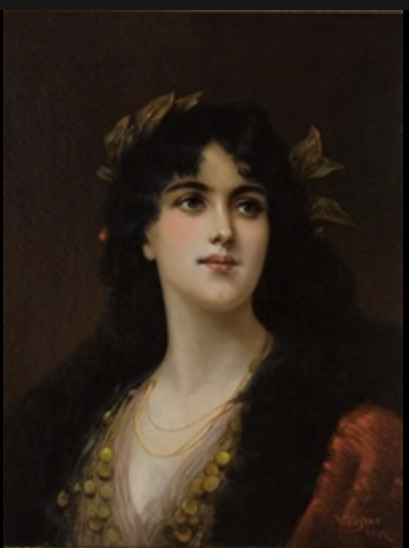
Early Life
Often referred to as “Jela” or “Lady Lena,” Jelena Lazarevic is renowned as a determined, beautiful, and courageous woman. She was born as the third in line of the royal daughters of Prince Lazar. It is noted that she was about 39 years old in 1403, this determines that she was born around 1364-1365.
Jelena was most than likely born in Prilepac and raised there for some time before moving to Krusevac where she continued her strict education under the guide of her mother; Milica and aunt; Jefimija.
As for the rest of her early life, nothing is known other than plausible education and living situation. The first information we have of her is in her early twenties when she married Durad II Balsic.
First Marriage
Around 1386 or 1387, Durad; Lord of Zeta, recognized Lazar’s as his ruler and lord and so to officialize his authority over the state of Zeta Lazar married his eldest unmarried daughter to him.
The couple had a single child together, Durad’s father namesaker and future successor; Balsa Balsic also known as ‘Balsa III’.
The purpose of this marriage remain political and sole purpose was to create an alliance as well as heirs. There are no mention of a possible love marriage between the two of them. Though it is noted that Durad often entrusted his wife to manage state affairs.
In early 1392, in fear of the uprising Turks, Durad sent word for his wife arrival in Dubrovnik in order to protect her and his heir, and though the government of Dubrovnik were aquiring the necessities for Jelena, she never arrived.
In September of that same year there was talk about her upcoming arrival, but she never came, yet again.
It was not until November of 1396 that Jelena would reach out to the Dubrovnik authorities for a ship to escort her to a meeting with Sandalj Hranić (who will later on become her second husband) as he had been fighting against the Balsic family for some time at that point.
This meeting might be one of tasks given to her by her husband. Jelena was noted to have a significant influence on the man.
As Regent of Zeta
In 1403, her late husband; Durad, passed away, and of course; the wise Jelena wasted no time and made her appearance as a subtitute ruler in full light. Due to her son’s inexperience and age, Jelena acted as his regent.
Many of the territories that belonged to Zeta were under Venitian rule and Jelena decided to reclaim said territories.
For five years she fought the Venitians to defend Zeta and her son’s inheritance despite facing harsh-trials. Through the uprising threats and council of disagreements, she followed as suited the interest of Zeta and her son.
In the reports of Jelka Redep in her book: КЋЕРИ КНЕЗА ЛАЗАРА ИСТОРИЈСКА СТУДИЈА ПОГОВОР…
“Jelena’s idea of rebellion was not just an empty desire. In the first days of 1405, a rebellion was planned in Zeta. Skadar revolted against Venitian rule, and the Prince barely escaped with his life. Durazzo also rose up in arms and recognized Jelena’s son as their ruler.”
In the early birth of this rebellion Jelena reached out to her younger brother; Despot Stefan Lazarevic, for aid, but due to his close-knit relationship with the Venitians he was unable to help her. Yet, she continued in her conquest with a temporary help from the Turks.
[Her own brother, the despot Stefan, was friends with both the Venetians and the Hungarians. Only the Turks agreed to help her, but even they only for a short time. Jela did not agree to her brother's proposals to reconcile with Venice, but persistently continued to fight, until 1406, when she had to agree to negotiations that lasted more than three years.
Miodrag Purković spares no words when he talks about how energetically and uncompromisingly Jela, as a widow, fought for the freedom of her country and her son's inheritance. She always took all the "blame" on herself instead of her son. In order to protect him, at the end of 1409, she went alone to negotiations in Venice, where she was kept for three months.
Purković points out how brave Jela was during those negotiations, and especially points to the fact that she was "neither confused nor afraid", unlike her mother, who once found herself in a similar situation before Bayazit in 1398. } - Dve srpske sultanije : Olivera Lazarevic (1373-1444) : Mara Brankovic (1418-1487) by Nikola Giljen, pg 169
Yet, despite this “Peace” Balsa continued his fight against the Venitians, but this only cost him great loss in territory.
Second Marriage
Prior to this marriage Duke of Bosnia; Sandalj Hranić (remember him?), who used to be married to a kin of Hrovoje Vukcic separated from his wife after this one's family lost influence in their political position.
Wishing to be associated with someone of more influence, Sandalj would later step a foot further and annulled his marriage to his wife; Katerina, since they shared no children, and instead offered for Princess Jelena Lazarevic or as she was known at the time Jelena Balsic; who at the time was the sister of a great ally of Sigismund.
This marriage, which was Sandalj's third marriage, benefited all parties involved, as Sandalj regained his position, Jelena now had one less enemy to worry about, and lastly Stefan was able to tie his new brother-in-law to him politically.
Strangely enough, this marriage could be considered a content union between the two. Sandalj is said to have been enchanted by his new bride/former enemy and to hold his step-son to high status and protect him at times.
Jelena is credited for this as she was known to have a powerful influence on this husband of hers who some would describe as an ‘arrogant man’.
Later Life
In April of 1421, the exhausted Balsa met with his uncle in Belgrade and transfered the remaining of his lands under this one’s protection. He soon passed away that same year. It is unkown how Jelena reacted to the news.
In 1423, she was visited by her youngest sister; Olivera, though this one might have been there more for diplomatic reasons to get news on her brother-in-law than for the sake of meeting her sister after 30 plus years apart.
Not much information has been recorded about Jelena’s where abouts until 1425. That year, the threat of the upcoming Turks were increasing and so as a result of this situation, Sandalj moved his family, including his wife, to Dubrovnik for protection.
After her husband death in 1435, she retired from state affairs as the state passed down to her late husband’s nephew, and she obviously could not have any influence on him.
She must have retired to her husband’s court in Novi, where it is assumed she lived an aristocratic lifestyle up and until her death.
Jelena passed away in 1443, living a good amount of her properties to her granddaughter and namesaker; Jelena. She left 200 ducats and a gilded icon to her only living sibling; Olivera, to be spent on a memorial for her as well as distribution to the poor.
Issue
Balsa III Balsic
( Sources: “КЋЕРИ КНЕЗА ЛАЗАРА ИСТОРИЈСКА СТУДИЈА ПОГОВОР” by Jelka Redep, Dve srpske sultanije : Olivera Lazarevic (1373-1444) : Mara Brankovic (1418-1487) by Nikola Giljen)
#Lazarevic Dynasty#Lazarevic#14th century#15th century#arranged marriage#Serbia#Moravian Serbia#History#geology#Lazar of Serbia#Lazar#Milica of Serbia#Đurađ II Balšić#serbian history#histoire#Jelena Lazarevic#Jelena Balsic#Stefan Lazarevic#jelenalazarevic#lazarevicsisters
46 notes
·
View notes
Text
what must be... uhh, certainly a week ago, now, i spotted a sticker outside, placed on a crossing sign in what is otherwise a relatively crowded street. a black & white cartoon of hitler shooting himself in the head, the text above which proclaims "FOLLOW YOUR LEADER" - obviously posturing itself as speaking to fascists. i really did not expect it, so it was a novel part of my afternoon...
something i noticed, but did not investigate until now: a url at the very bottom. blogtipomogo.blogspot.com
it seems to be... a very barebones index page for a serbian 'ANTIFA' group of anarchists. with a bunch of regional branches - belgrade, novi sad, vranje, nis, krusevac, even sombor...
seemingly dormant - but not so dormant that they don't still have shooters putting up fun stickers everywhere, since i know for a fact that was not there since before last week.
i wonder if i've been walking amongst anarchist supersoldiers this entire time without even knowing. incredibly fascinating
9 notes
·
View notes
Text
L'Universo Donna disegnato da Marco De Angelis.
A cura di Donatella Lavizzari
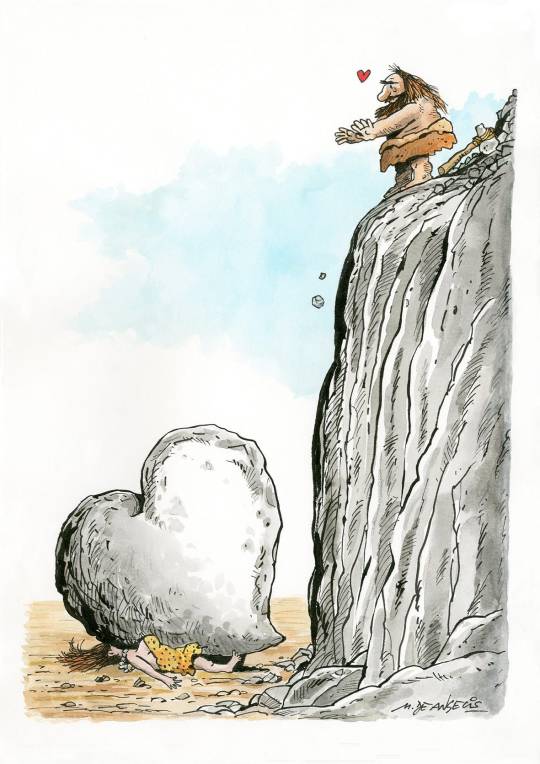
Marco De Angelis è giornalista professionista, disegnatore umorista, illustratore e grafico. Ha illustrato molti libri per ragazzi per Giunti, De Agostini, La Scuola, San Paolo, Lapis, European Language Institute (28 riviste, distribuite in 40 Paesi) e altri editori.
Dal 1975 pubblica su 150 tra quotidiani e riviste in Italia e all’estero: Il Popolo, Il Messaggero, La Repubblica (di cui è stato redattore), Il Mattino, Grazia, I Gialli Mondadori, Panorama, Help! Comix, Comic Art, le riedizioni de Il Travaso e Marc’Aurelio, riviste umoristiche e specializzate.
I suoi disegni sono apparsi su decine di giornali negli USA e in Europa distribuiti anche da Cartoon Arts International e The New York Times Syndicate: Washington Post, Chicago Tribune, Los Angeles Times, Vancouver Sun, Sacramento Bee, Herald Tribune, Courrier International, Le Monde, Nebelspalter, Yez, Eulenspiegel e altri.
Ha collaborato con la RAI, con TeleMontecarlo, molte associazioni e società, tra cui Confartigianato, Università Bocconi e Ministero dell’Interno.
Palma d’Oro a Bordighera nel 1997, ha ricevuto più di 100 premi in Italia e all’estero: Istanbul, Teheran, Tokyo, Belgrado, Krusevac, Montreal, Amsterdam, Olen, Genova, Dolo, Fano, Ferrara, …
Recentemente è stato premiato a Solin (Croazia) per il 17° International Cartoon Festival e alla 38a edizione dell'Aydin Dogan Vakfi (Istanbul), uno dei concorsi più prestigiosi al mondo, gli è stato assegnato il Terzo Premio (dopo aver vinto il 1° premio nel 1987 e nel 2016).
Sua è l'illustrazione della bellissima mostra di Cannes Cartoons "Infanzie rubate", esposta domenica 11 Settembre al Palais des Festivals di Cannes, dopo la mostra tenutasi a Giugno nell'Isola di Santa Margherita.
Due libri da lui illustrati hanno ricevuto il 1°Premio Legambiente 2001 per la divulgazione scientifica e il 1°Premio Bancarellino 2002.
E’ uno dei tre curatori della rivista umoristica online Buduàr.

La vasta e poliedrica produzione artistica di Marco De Angelis annovera opere originali che trattano temi sempre attuali: politica, società, ambiente, guerra, amore, scienza e cultura.
Il suo è un ritratto a 360 gradi dell’umanità.
Sempre fedele a se stesso, De Angelis aderisce alla complessità della realtà contemporanea, interpretandone le contraddizioni, le ambiguità, le fragilità.
Il suo è uno sguardo ironico, schietto, preciso, a volte poetico, a volte tagliente ed impietoso.
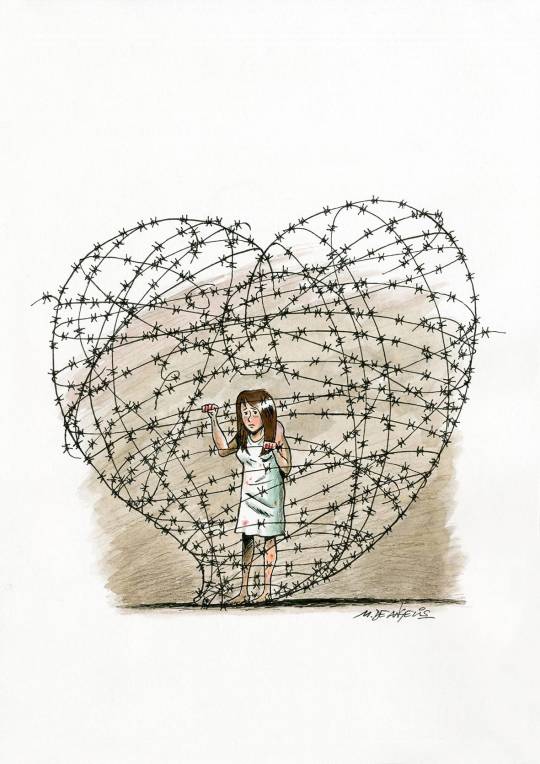
De Angelis è un sensibile scrutatore del mondo e le sue denunce sagaci toccano profondamente le corde dell’anima e colpiscono al cuore come dardi.
Le sue illustrazioni PARLANO.
E parlano una lingua universale.
Sono capaci di sensibilizzare i destinatari su questioni rilevanti.
Lanciano SOS per il pianeta Terra, risvegliano coscienze, portano
alla luce problematiche spesso vengono sepolte dall’indifferenza.
Il pianeta Donna è una delle tematiche affrontate da De Angelis, sotto diverse angolazioni ma sempre con la stessa sensibilità.
E i messaggi diventano memorabili e inducono gli spettatori alla riflessione.
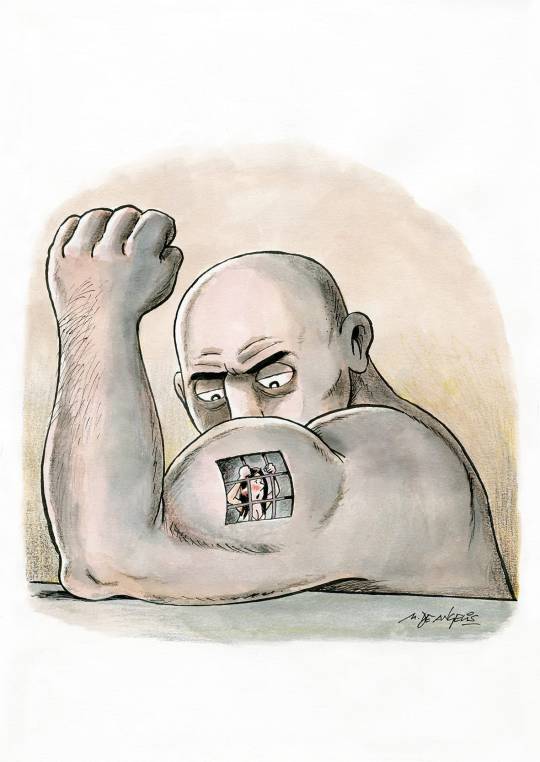
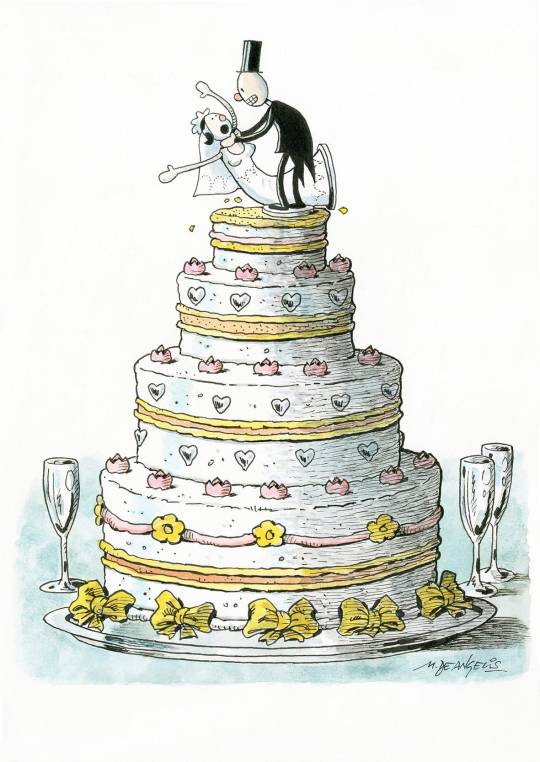


#Marco De Angelis#cartoonist#comicart#comicartist#international artist#donne#women#diritti violati#condizione femminile#cartoon art
3 notes
·
View notes
Text

A Serbian man with his son in Konjic, Bosnia-Herzegovina, in 1912.

A guard at the Soviet Embassy in Ankara, Turkey, on December 30, 1922, the day of the establishment of the Soviet Union.
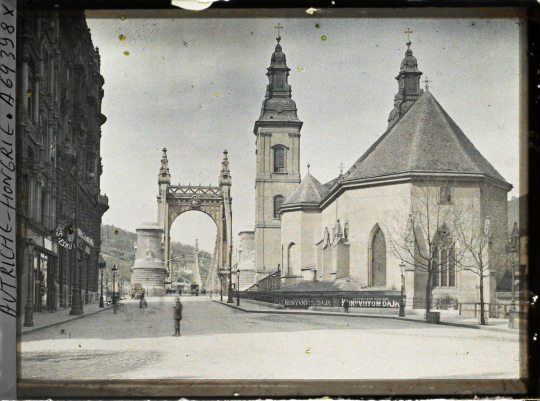
Budapest’s City Parish Church in 1913. In the background are the arches of the Elizabeth Bridge, which was destroyed during World War II. Today, a simplified suspension bridge spans the Danube at the same point.

Horses graze on the hills around Openica, in what is now North Macedonia, in 1913.

A Catholic woman in Sarajevo shows off her tattoos in 1912. The Balkan Catholic practice of traditional tattoos on women was effectively ended under communism in Yugoslavia following World War II.

A young Serbian man butchering a sheep in 1913 in Krusevac.

Armed men apparently guarding an Armenian pharmacy in Adana, in today’s eastern Turkey, in 1919. The original caption reads: “Syria, Adana, Armenian Pharmacy.”
The Archives of the Planet was a project undertaken from 1908 to 1931 to photograph human cultures around the world. It was sponsored by French banker Albert Kahn. It was soon after autochrome, the first viable color film technology, became commercially available.
Kahn was a French banking titan who funneled much of his fortune into philanthropic projects.
The project grew to encompass expeditions to Brazil, rural Scandinavia, the Balkans, North America, the Middle East, Asia, and West Africa, among other destinations, and documented historical events such as the aftermath of the Second Balkan War, World War I in France, and the Turkish War of Independence. It was inspired by Kahn's internationalist and pacifist beliefs.
A dozen of France’s best photographers were tasked by Kahn to travel the world in order to “preserve once and for all certain aspects, practices, and modes of human activity whose fatal disappearance is only a matter of time,” the banker explained.
The new Technology: Photography and autochrome
The autochrome color film technology used by Kahn’s photographers was first introduced in France in 1907 and immediately caused a sensation. One commentator noted in 1908 that the autochrome technique replicated “the colors of nature in a most startlingly truthful way.” Autochrome film used millions of “pixels” of dyed grains of potato starch pressed into emulsion to create color photos.
The pastel-shaded, slightly speckled images that autochrome produced were described as being “the color of dreams.”
Info:
Wikipedia | Petapixel | Les Archives de la Planète
#The archives of the planet#photodocumentary#old timey wimey humans#timey wimey#globalization#albert kahn
1 note
·
View note
Text
Ovaj grad svrstan u red modernih gradova u Srbiji - Kruševac - Servisne informacije - B92 Lokal
https://www.b92.net/lokal/krusevac/servisne-informacije-ovaj-grad-svrstan-u-red-modernih-gradova-u-srbiji-2489886
View On WordPress
0 notes
Video
youtube
Apartman Kopaonik, opremanje - namestaj po meri Krusevac
0 notes
Text
Uniqueness expressed through earrings
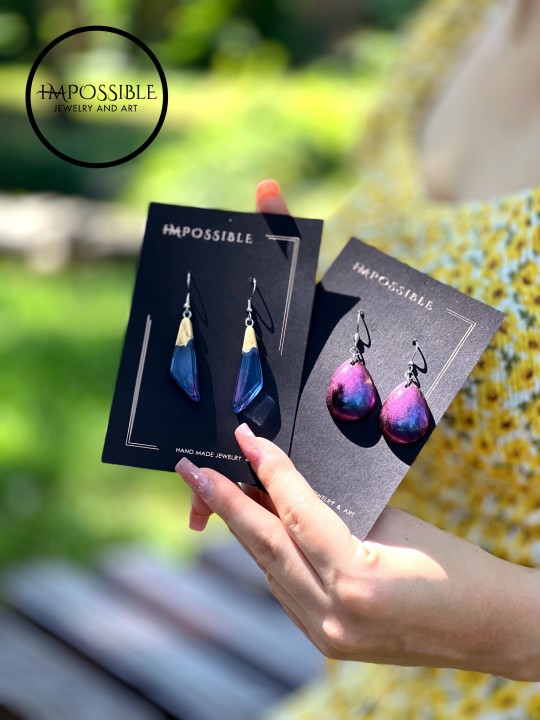
#impossiblejewelry#jewelry#earrings#handmade#srbija#krusevac#serbia#fotografija#sumadija#minđuše#gift for sister#resin#epoxy#nails#cute nails#photography#photo#photoshoot#nakit
6 notes
·
View notes
Video
youtube
Namestaj Krusevac - kuhinje, tv police, regali po meri
0 notes
Photo
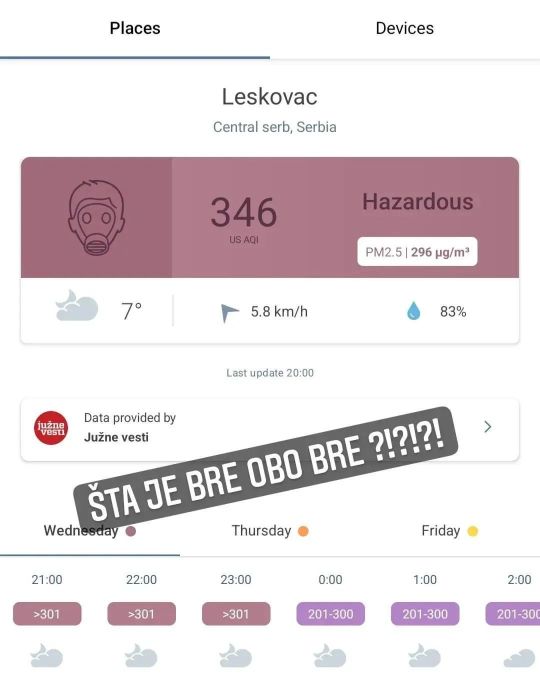
Rekord !!! . . #leskovac #novisad #beograd #nis #kragujevac #vranje #kraljevo #novipazar #pirot #subotica #krusevac #sabac #smederevo #srbija #zemun #valjevo #cacak #zrenjanin #uzice #jagodina #novibeograd #sombor #pozarevac #pancevo #loznica #aleksandarvucic #beogradnocu #surdulica #gorancvetanovic #sns https://www.instagram.com/p/Cl4T7LVshj3/?igshid=NGJjMDIxMWI=
#leskovac#novisad#beograd#nis#kragujevac#vranje#kraljevo#novipazar#pirot#subotica#krusevac#sabac#smederevo#srbija#zemun#valjevo#cacak#zrenjanin#uzice#jagodina#novibeograd#sombor#pozarevac#pancevo#loznica#aleksandarvucic#beogradnocu#surdulica#gorancvetanovic#sns
0 notes
Text
youtube
Hardox 450 - lasersko sečenje Kruševac - sečenje specijalnih čelika
#lasercut#lasercutting#laserskosecenje#krusevac#hardox#laserskosecenjekrusevac#kvalitet#usluga#celik#youtube#gvožđe#Youtube
0 notes